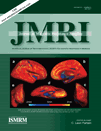In vivo assessment of MR elastography-derived effective end-diastolic myocardial stiffness under different loading conditions
Abstract
Purpose:
To compare magnetic resonance elastography (MRE) effective stiffness to end-diastolic pressure at different loading conditions to demonstrate a relationship between myocardial MRE effective stiffness and end-diastolic left ventricular (LV) pressure.
Materials and Methods:
MRE was performed on four pigs to measure the end-diastolic effective stiffness under different loading conditions. End-diastolic pressure was increased by infusing Dextran-40 (20% of blood volume). For each infusion of Dextran-40, end-diastolic pressure was recorded and end-diastolic effective stiffness was measured using MRE. In each pig, least-square linear regression was performed to determine the correlation between end-diastolic effective stiffness and end-diastolic LV pressure.
Results:
A linear correlation was found between end-diastolic LV pressure and end-diastolic effective stiffness with R2 ranging from 0.73–0.9. A linear correlation with R2 = 0.26 was found between end-diastolic LV pressure and end-diastolic effective stiffness when pooling data points from all pigs.
Conclusion:
End-diastolic effective myocardial stiffness increases linearly with end-diastolic LV pressure. J. Magn. Reson. Imaging 2011;33:1224–1228. © 2011 Wiley-Liss, Inc.




